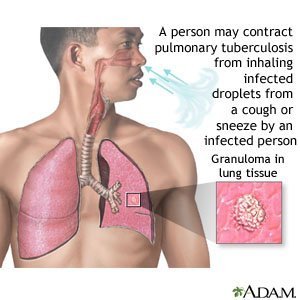drwale
New Member

Tuberculosis is a chronic, highly infectious disease that majorly affects the lungs, although other organs of the body such as the kidneys, brain and spinal cord are sometimes involved. In a bid to raise awareness levels about the burden of tuberculosis in many parts of the world, the 24th of March every year has been earmarked as World Tuberculosis Day. It was on that date in 1882 that Dr Robert Koch announced his discovery of the causative organism, Mycobacterium tuberculosis in a giant stride towards stemming the tides of the deadly infection. Since then, significant progress has already been achieved in the early diagnosis, treatment and prevention of the disease.
As the world continues to work towards eradicating tuberculosis, here are a few salient facts you need to know about the infection.
1. Tuberculosis is a very rampant disease
Sadly, tuberculosis still accounts for about 1.6 million deaths yearly, especially in the poorest countries of the world where people have suppressed immunity for various reasons. Also, not many people are aware of the shocking statistic that about one third of the world's population is infected with tuberculosis. Thankfully, however, only a small fraction of infected individuals will become sick with the disease. In other words, the infection remains at the latent phase in most people for as long as their immune system is strong enough.
2. Tuberculosis and HIV often coexist
It is worthy of note that HIV and tuberculosis could exist together in the same individual, each one helping to speed up the other's progress. In fact, tuberculosis remains the leading killer of people living with HIV/AIDS. To the same degree, HIV is also the single most important factor that has contributed to the upsurge of tuberculosis in the last two decades. It is interesting that over the past decade, coordinated tuberculosis and HIV services to detect, prevent and treat the deadly duo have assisted in saving about 6 million lives. Hence, current treatment guidelines recommend routine screening and treatment for HIV in all tuberculosis patients and vice versa.
3. How does TB spread?
The tubercle bacillus is often released into the air in the form of infectious droplets when a person with active tuberculosis coughs or sneezes. Especially in poorly ventilated areas, nearby persons readily inhale these bacteria and may eventually become infected. Other factors that increase a person's risk include overcrowding; prolonged contact with someone with persistent cough; depressed immunity due to HIV, cancer or diabetes; malnutrition; smoking and alcohol abuse. Furthermore, abdominal tuberculosis can be contracted from ingestion of unpasteurized milk.
4. Tuberculosis is usually symptomatic
Tuberculosis often starts with a chronic cough that lasts for 3 weeks or more. It may be dry initially but later the person may start coughing up blood-stained sputum or frank blood. In fact, tuberculosis remains the leading cause of massive haemoptysis (bloody sputum) in the tropics. Some persons may experience chest pain, loss of appetite and weight loss that is evidenced by the looseness of previously fitted clothes. Other symptoms include fever, fatigue as well as drenching night sweats. Anyone experiencing these symptoms especially prolonged cough with or without blood stain needs an urgent checkup to rule out tuberculosis.
5. How is tuberculosis detected?
There are various means of diagnosing tuberculosis. However, a very effective method involves examining early-morning sputum samples of the patient for tubercle bacilli under a microscope. Also, a chest X-ray may reveal features suggestive of tuberculosis. Mantoux tuberculin skin test is useful in screening high-risk persons for latent tuberculosis and those who test positive can go for interferon gamma release assays to confirm.
6. Tuberculosis can be treated
Tuberculosis is usually treated with a combination of effective antibiotics over 6 - 9 months, depending on the type of infection. The World Health Organisation recommends a combination of rifampicin, isoniazid, pyrazinamide and ethambutol for the first two months and maintenance with rifampicin and isoniazid for the last four months. In order to prevent resistance to these drugs and treatment failure, directly observed therapy short-course (DOTS) is often practised in which a health care provider ensures the patient swallows the medications in his presence before leaving the clinic.
7. Tuberculosis is preventable
From the aforementioned, it is obvious that the spread of tuberculosis can be minimized by avoiding overcrowding and contact with infected persons while ensuring balanced nutrition and avoiding smoking or alcohol abuse. In the same vein, prompt detection and treatment of HIV, cancer or diabetes which can weaken the immune system, rendering them vulnerable will also go a long way in preventing tuberculosis. Lastly, Bacillus Calmette-Guerin (BCG) vaccine is a live attenuated vaccine usually administered to babies at birth under the National Programme on Immunization. It tends to confer significant immunity on vaccinated children, reducing their risk of serious tuberculosis infection in childhood.
Image Credit: drugs.com

